Have you ever wondered what lies within the lush and mysterious rainforests of Suriname? The captivating diversity of this extraordinary ecosystem is like stepping into a real-life adventure. In this article, we’ll take you on a journey through the fascinating rainforests of Suriname, where you’ll discover the hidden gems of biodiversity that inhabit this remarkable region.
As you journey through the rainforests of Suriname, you’ll be mesmerized by the sheer abundance of life that exists here. From majestic trees reaching towards the sky to a vibrant symphony of birdcalls echoing through the canopy, every corner of this rainforest teems with vitality. Suriname is home to an astonishing array of plant and animal species, many of which are found nowhere else on Earth. In fact, it is estimated that over 90% of the country is still covered in pristine rainforest, making it one of the most biodiverse places in the world.
In the upcoming article, we’ll delve deeper into the incredible flora and fauna found in the rainforests of Suriname, exploring the intricate web of life that sustains this unique ecosystem. From rare orchids and towering ceiba trees to elusive big cats and colorful birds, you’ll learn about the extraordinary adaptations and symbiotic relationships that allow these species to thrive. So strap on your virtual hiking boots and get ready to embark on a journey through the fascinating rainforests of Suriname, where nature’s wonders await at every turn.
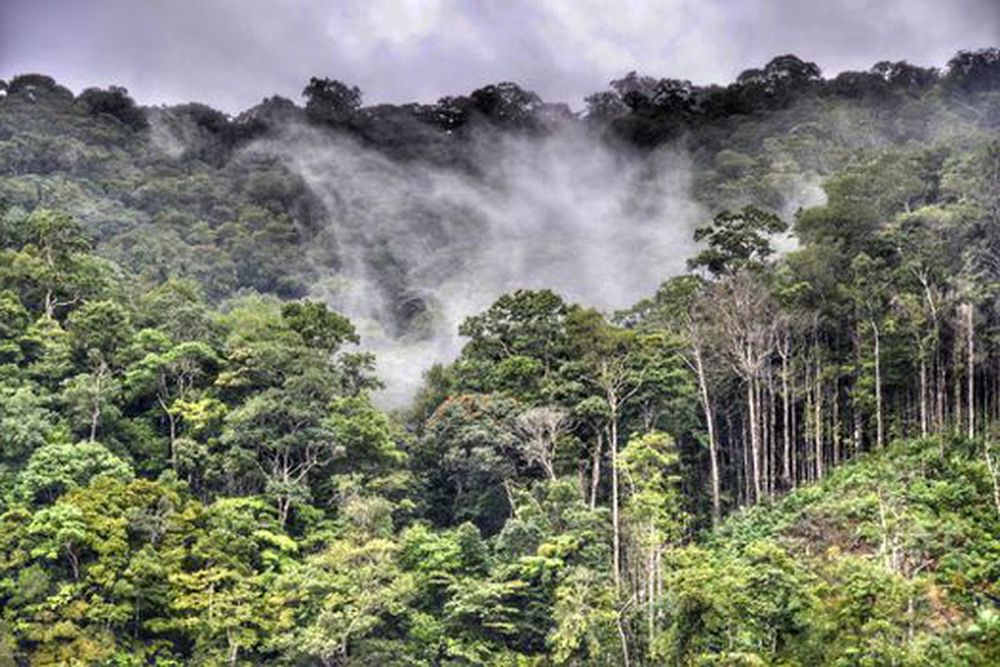
Overview of Suriname’s Rainforests
Suriname, located on the northeastern coast of South America, is home to some of the most diverse rainforests in the world. Spanning over 90% of the country’s land area, these lush green ecosystems are a treasure trove of biodiversity, providing a habitat for countless plant and animal species. In this article, you will embark on a journey through the captivating rainforests of Suriname, exploring their ecological features, flora and fauna, medicinal and nutritional value, conservation efforts, cultural significance, and much more. Let’s delve into the enchanting world of Suriname’s rainforests and discover the wonders they hold.
Introduction to Suriname
Suriname, officially known as the Republic of Suriname, is a small yet culturally diverse country nestled between Guyana to the west and French Guiana to the east. Formerly a Dutch colony, Suriname gained its independence in 1975 and has since embraced its multicultural heritage. With a population of approximately 600,000 people, Suriname boasts a rich blend of indigenous, Afro-Caribbean, and Hindustani cultures.
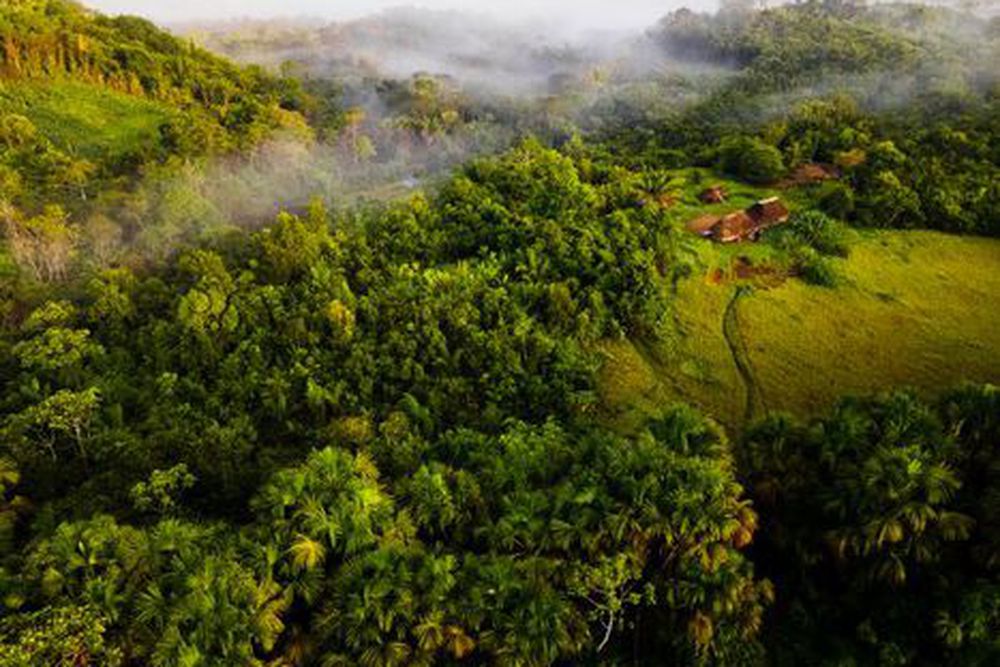
Importance of Rainforests
Rainforests are often referred to as the lungs of the Earth due to their vital role in producing oxygen and regulating climate. Suriname’s rainforests play a crucial part in maintaining the health of our planet. They act as carbon sinks, absorbing and storing vast amounts of carbon dioxide, which helps mitigate climate change. Furthermore, these rainforests provide essential ecosystem services, such as water purification, soil fertility, and natural flood control.
Biodiversity in Suriname’s Rainforests
Suriname’s rainforests are renowned for their incredible biodiversity. The country’s unique position, nestled between the Guiana Shield and the Amazon Basin, contributes to the remarkable richness of plant and animal species found within its rainforests. It is estimated that Suriname is home to over 6,000 species of plants, including numerous rare and endemic species. The vast array of fauna includes mammals, reptiles, amphibians, and an astounding variety of bird species.
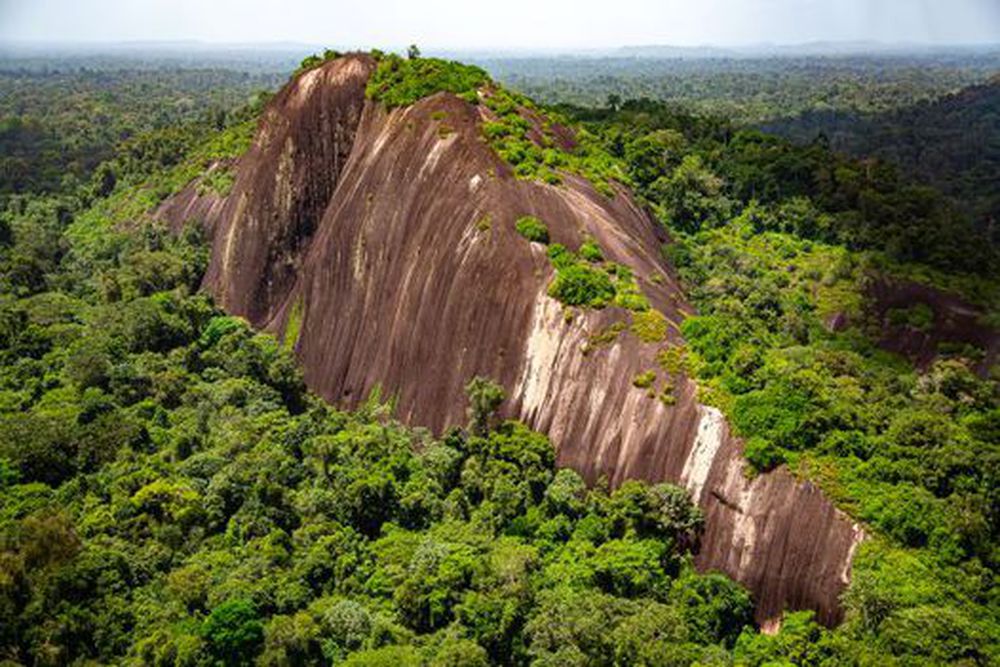
Ecological Features
Climate and Weather Patterns
Suriname’s rainforests experience a tropical rainforest climate characterized by high temperatures, high humidity, and significant rainfall throughout the year. The average annual rainfall ranges from 2,500 to 4,000 millimeters, with the wet season typically occurring between May and August. The consistent rainfall creates a lush and vibrant environment, supporting the growth of diverse plant species.
Topography and Landforms
Suriname’s rainforests encompass a diverse range of topographical features, including dense forests, mountains, savannas, and wetlands. The country’s terrain is dominated by pristine rainforest, with towering trees towering above a dense understory. The untouched wilderness is interspersed with stunning waterfalls, winding rivers, and tranquil lakes, creating a picturesque landscape that is both breathtaking and awe-inspiring.
Water Sources and Hydrological Cycle
The rainforests of Suriname are fed by a network of rivers and streams, making water abundant throughout the year. The rivers serve as essential water sources for both wildlife and indigenous communities residing in the rainforest. The hydrological cycle within the rainforests plays a vital role in maintaining the delicate balance of moisture, ensuring the sustenance of the diverse ecosystems found within Suriname.
Flora and Fauna
Rich Diversity of Plant Species
Suriname’s rainforests are teeming with an incredible variety of plant species. The lush canopy is dominated by towering giants such as the greenheart and purpleheart trees, known for their robust and durable timber. Epiphytes, including orchids and bromeliads, cling to the trunks and branches of trees, adding a splash of vibrant colors to the forest canopy. The forest floor is carpeted with ferns, mosses, and an assortment of flowering plants.
Endemic and Rare Flora
Suriname’s rainforests harbor numerous rare and endemic plant species, making them a botanist’s paradise. The country boasts several unique plant species found nowhere else in the world. Some notable examples include the Suriname cherry (Eugenia sellowiana), the Suriname rubber tree (Hevea benthamiana), and the Surinam palm (Manicaria saccifera). These endemic species are not only of scientific interest but also play a crucial role in maintaining the fragile balance of the rainforest ecosystems.
Iconic Animal Species
The rainforests of Suriname are home to an astonishing array of animal species, including some of the most iconic and endangered creatures on the planet. Jaguars, tapirs, and giant otters roam the forest floor, while monkeys swing through the treetops. The Harpy eagle, with its massive wingspan, reigns as the king of the skies. The rivers and streams are inhabited by caimans, turtles, and colorful freshwater fish. These magnificent animals contribute to the ecological balance of Suriname’s rainforests, forming intricate food webs and playing vital roles as pollinators and seed dispersers.
Bird Life in the Rainforests
Suriname’s rainforests are a paradise for bird enthusiasts and ornithologists alike. The country boasts an astonishing 700 species of birds, ranging from vibrant macaws and toucans to secretive tinamous and elusive manakins. The undisturbed rainforests provide homes and breeding grounds for these feathered wonders, making Suriname a haven for birdwatchers from around the world. The unique avian biodiversity in Suriname demonstrates the importance of preserving these rainforests for future generations to appreciate and enjoy.
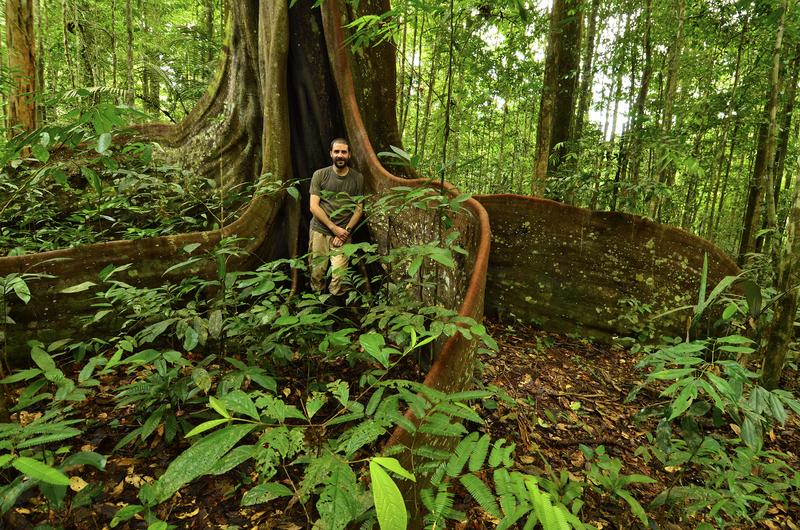
Medicinal and Nutritional Value
Traditional Medicinal Practices
For centuries, the indigenous communities of Suriname have relied on the rainforest for their medicinal needs. Traditional healers, known as shamans, possess intimate knowledge of the healing properties of various plants, passed down through generations. These practices encompass the holistic approach to healthcare, combining spirituality, herbal remedies, and rituals. The indigenous people’s deep connection with nature serves as a reminder of the intricate relationship between the rainforests and human well-being.
Unique Plants with Healing Properties
Suriname’s rainforests are a treasure trove of plants with medicinal value. The use of these plants in traditional medicine has gained recognition in recent years, leading to scientific investigations and the discovery of potential new drugs. For example, the Suriname gome tree (Lonchocarpus spp.) contains compounds that exhibit anti-inflammatory properties. The rosy periwinkle (Catharanthus roseus), endemic to the region, has been found to contain alkaloids used in the treatment of leukemia. These discoveries highlight the untapped potential of Suriname’s rainforest flora in contributing to global medicine.
Suriname’s Contribution to Global Medicine and Nutrition
Suriname’s rainforests have made significant contributions to the field of medicine and nutrition on a global scale. Through collaborative efforts between indigenous communities, scientists, and pharmaceutical companies, the country has played a role in the development of drugs used to treat various diseases, including cancer, malaria, and cardiovascular disorders. The rich biodiversity of Suriname’s rainforests continues to hold promise for further research and discovery.
Threats to Rainforests
Deforestation and Land Conversion
Like many rainforests around the world, Suriname’s rainforests are under threat from deforestation and land conversion for agricultural purposes. The expansion of palm oil plantations, logging activities, and the building of infrastructure pose significant risks to the delicate balance of these ecosystems. Clearing large swaths of rainforest not only results in the loss of biodiversity but also releases vast amounts of carbon dioxide into the atmosphere, exacerbating climate change.
Illegal Logging and Mining
Illegal logging and mining activities further contribute to the degradation of Suriname’s rainforests. The demand for precious woods and minerals drives unscrupulous operators to exploit these natural resources, often disregarding environmental regulations and sustainable practices. The uncontrolled extraction of timber and minerals not only destroys habitats but also disrupts the intricate balance of the rainforest ecosystems, endangering countless plant and animal species.
Habitat Loss and Fragmentation
The encroachment of human settlements and infrastructure development leads to habitat loss and fragmentation, isolating forest patches and disrupting wildlife migration patterns. Fragmented habitats hinder the natural movement of species, reducing genetic diversity and increasing the risk of extinction. With the loss of their natural habitats, many animal species face an uncertain future, and the delicate ecological balance of Suriname’s rainforests is under severe threat.
Climate Change Impacts
Climate change poses an additional challenge to Suriname’s rainforests. Rising temperatures, changes in rainfall patterns, and extreme weather events such as droughts and floods can have profound effects on the delicate ecosystems. Shifts in climate can disrupt the intricate relationships between plants, animals, and their environment, leading to decreased biodiversity and the potential loss of unique species. It is essential to acknowledge and address the impacts of climate change to ensure the long-term survival of Suriname’s rainforests.
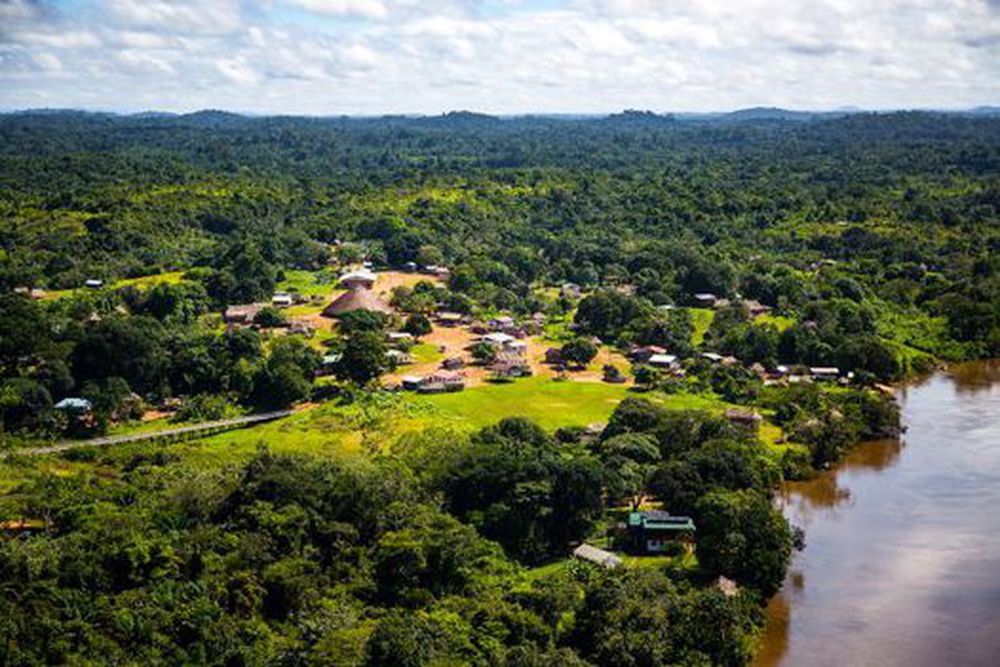
Conservation Efforts
Protected Areas and National Parks
Suriname has taken significant steps to protect its rainforests and promote sustainable development. The country has established a network of protected areas and national parks, encompassing approximately 11% of its land area. These protected areas serve as sanctuaries for threatened species and are essential for preserving the unique biodiversity found within Suriname’s rainforests. Notable examples include the Central Suriname Nature Reserve, a UNESCO World Heritage site, and the Brownsberg Nature Park.
Suriname’s Commitment to Sustainable Development
Suriname’s commitment to sustainable development is evident in its efforts to balance economic growth with environmental conservation. The government has implemented policies to promote responsible mining practices, sustainable forestry, and eco-friendly tourism. By adopting practices that reduce the ecological footprint, Suriname aims to ensure the long-term viability of its rainforests while contributing to the country’s economic advancement.
International Collaboration and Conservation Initiatives
Recognizing the global significance of Suriname’s rainforests, international organizations and conservation initiatives have been established to support the country’s conservation efforts. The Suriname Conservation Foundation, for example, collaborates with local communities and international partners to protect and preserve Suriname’s natural heritage. These initiatives facilitate knowledge sharing, capacity building, and financial support, creating a cooperative environment for the preservation of Suriname’s rainforests.
Indigenous Communities and Cultural Significance
Traditional Knowledge and Practices
The indigenous communities of Suriname have a deep-rooted connection to the rainforests, with their traditions, beliefs, and way of life intertwined with the natural environment. These communities possess invaluable knowledge of the rainforest’s resources and have developed sustainable practices for centuries. They are the custodians of traditional knowledge and play an essential role in the conservation and preservation of Suriname’s rainforests.
Relationship Between Indigenous Communities and Rainforests
The rainforests hold immense cultural and spiritual significance for the indigenous communities of Suriname. These communities rely on the forest for their subsistence, utilizing its resources for food, shelter, and medicine. The communal lifestyle emphasizes the importance of harmony with nature and the interdependence of all living beings. The sustainable practices of these indigenous communities serve as a model for conservation efforts, highlighting the necessity of incorporating traditional knowledge into modern conservation strategies.
Preservation of Indigenous Culture and Heritage
Preserving the cultural heritage of indigenous communities is a vital aspect of rainforest conservation in Suriname. Efforts are being made to safeguard indigenous rights, promote cultural diversity, and empower communities to participate in decision-making processes. Encouraging the education of indigenous youth in traditional practices, language, and crafts helps preserve their rich cultural traditions, ensuring their survival for future generations.
Exploring Suriname’s Rainforests
Popular Ecotourism Destinations
Suriname offers a plethora of opportunities for nature enthusiasts to explore its magnificent rainforests. Popular ecotourism destinations include the Brownsberg Nature Park, Voltzberg Nature Reserve, and the Upper Suriname River region. These locations offer an immersive experience, allowing visitors to witness the breathtaking beauty of the rainforests, encounter diverse wildlife, and learn from the indigenous communities about their rich cultural heritage.
Activities for Nature Enthusiasts
For those seeking an adventure in Suriname’s rainforests, a range of activities await. Hiking through dense jungle trails, embarking on river safaris, and exploring hidden waterfalls are just a few of the options available. The rainforests also offer incredible opportunities for birdwatching, wildlife spotting, and fishing. Suriname’s diverse ecosystems provide nature enthusiasts with an unparalleled experience, leaving a lasting impression and appreciation for the world’s natural wonders.
Guided Tours and Wildlife Spotting
To truly appreciate the intricacies of Suriname’s rainforests, guided tours are highly recommended. Experienced guides accompany visitors, offering insights into the flora and fauna, cultural practices, and conservation efforts. Wildlife spotting tours provide opportunities to encounter jaguars, giant river otters, and the elusive harpy eagle, among others. These guided tours ensure a safe and educational experience, making the most of your journey through Suriname’s rainforests.
Scientific Research and Discoveries
Botanical Studies and New Species
Suriname’s rainforests continue to be a source of fascination for botanists and scientists. Ongoing botanical studies have led to the discovery of new plant species, expanding our knowledge of the rainforest’s intricate ecosystem. Researchers have identified unique orchids, bromeliads, and other plant species, adding to the rich diversity already known to exist in Suriname’s rainforests. These discoveries shed light on the intricate relationships between plants and their environment, contributing to our understanding of ecological processes.
Wildlife Monitoring and Conservation Research
Scientific research plays a vital role in monitoring wildlife populations and understanding the impacts of human activities on rainforest ecosystems. Through satellite tracking, camera traps, and acoustic monitoring, researchers gather data on animal movements, behavior, and population dynamics. These studies provide crucial insights into the conservation needs of threatened species and inform conservation strategies for the long-term protection of Suriname’s rainforests.
Contributions to Ecological Understanding
Suriname’s rainforests have provided immense contributions to our ecological understanding. From studying the complex interactions between plants and animals to unraveling the intricacies of nutrient cycling and carbon sequestration, researchers continually uncover new insights into the functioning of rainforest ecosystems. Suriname’s rainforests have become living laboratories, fostering scientific inquiry and contributing to global efforts in biodiversity conservation and ecosystem management.
Challenges and Future Outlook
Balancing Economic Development and Environmental Conservation
One of the significant challenges facing Suriname is finding a balance between economic development and environmental conservation. The country’s natural resources, including timber, minerals, and biodiversity, hold great economic potential. However, unsustainable practices can have far-reaching consequences, endangering both the rainforests and the communities that rely on them. By adopting sustainable practices, Suriname can secure its economic growth while safeguarding the invaluable natural heritage of its rainforests.
Sustainable Practices and Green Initiatives
Suriname has made strides in promoting sustainable practices and green initiatives. Encouraging responsible mining, promoting eco-friendly tourism, and supporting sustainable agriculture are steps in the right direction. By implementing policies that prioritize environmental conservation, Suriname can lead by example and inspire other nations to adopt similar practices.
Education and Awareness for Eco-friendly Choices
Education and awareness play essential roles in fostering an environmentally conscious society. By instilling a sense of pride and respect for Suriname’s rainforests in its citizens, future generations can actively participate in their conservation. Raising awareness about the importance of sustainable lifestyle choices, such as reducing waste, conserving energy, and supporting eco-friendly businesses, can contribute to the long-term preservation of Suriname’s rainforests.
Role of Government and Policies
Legislation and Legal Frameworks
Suriname’s government plays a crucial role in shaping policies and legislation that affect the conservation of rainforests. The establishment of protected areas, regulation of mining and forestry activities, and enforcement of environmental laws are all part of the government’s responsibility in safeguarding Suriname’s natural heritage. Continued commitment to strengthening legal frameworks is vital to ensure the long-term protection of the country’s rainforest ecosystems.
Forest Management and Governance
Effective forest management and governance are essential components of rainforest conservation. Suriname has implemented strategies to promote sustainable forestry practices, including the development of forest management plans and certification schemes. By involving local communities in decision-making processes and empowering them to manage their resources sustainably, Suriname creates a framework for long-term ecological and socio-economic stability.
Supporting Research and Conservation Projects
The government of Suriname recognizes the importance of supporting research and conservation projects to preserve the country’s rainforests. Financial assistance, capacity building, and collaboration with international organizations are crucial in ensuring the success of such initiatives. By providing resources and encouraging partnerships, Suriname establishes itself as a global leader in rainforest conservation and highlights its commitment to safeguarding its natural heritage.
International Recognition and UNESCO Designations
UNESCO World Heritage Sites
Suriname’s rainforests have gained international recognition for their outstanding universal value. The Central Suriname Nature Reserve, inscribed as a UNESCO World Heritage site in 2000, protects a significant portion of Suriname’s rainforests and is recognized for its exceptional biodiversity and ecological importance. This prestigious recognition serves as a testament to the exceptional value of Suriname’s rainforest ecosystems.
Biosphere Reserves
Suriname is also home to several Biosphere Reserves, designated by UNESCO to promote sustainable development and conservation of natural resources. These reserves, including the Brownsberg Nature Park and the Coppename Monding Nature Reserve, serve as models for harmonizing human activities with ecological integrity. The Biosphere Reserves in Suriname demonstrate the country’s commitment to achieving a balance between conservation and development.
Conservation Success Stories
Suriname’s commitment to rainforest conservation has yielded several success stories. The resurgence of the Suriname river turtle population through community-led conservation efforts, the establishment of the Sipaliwini Savanna Nature Reserve, and the protection of critically endangered species such as the Surinam toad are just a few examples. These success stories highlight the potential for transformative change and offer hope for the future of Suriname’s rainforests.
Collaboration for Global Biodiversity Conservation
Sharing Knowledge and Best Practices
Suriname actively participates in international collaborations and knowledge-sharing initiatives for the conservation of global biodiversity. By exchanging experiences, sharing best practices, and engaging in dialogue with other nations, Suriname contributes to a global network of conservation efforts. This collaboration not only enhances Suriname’s capacity to manage its own rainforest resources but also promotes learning and progress in biodiversity conservation worldwide.
International Agreements and Partnerships
Suriname has established partnerships and entered into international agreements to promote rainforest conservation and sustainable development. The country is a signatory to important conventions such as the Convention on Biological Diversity and the Paris Agreement on Climate Change. By actively engaging in these agreements, Suriname demonstrates its commitment to global biodiversity conservation and its responsibility to future generations.
Role in Promoting Sustainable Development Goals
Through its conservation efforts, Suriname actively contributes to the United Nations Sustainable Development Goals (SDGs). The protection and sustainable use of terrestrial ecosystems, the promotion of responsible consumption and production, and the preservation of cultural heritage are just a few SDGs that align with Suriname’s rainforest conservation efforts. Suriname serves as an exemplar for the integration of sustainable practices into national policies, demonstrating the power of rainforest conservation in achieving the SDGs.
Conclusion
The rainforests of Suriname are a treasure trove of biodiversity, cultural heritage, and ecological wonders. They provide essential ecosystem services, support the livelihoods of indigenous communities, and contribute to global efforts in biodiversity conservation. It is our collective responsibility to protect, preserve, and celebrate Suriname’s rainforests for future generations. By appreciating the captivating beauty of these ecosystems and acknowledging their profound significance, we can ensure the long-term survival of Suriname’s natural heritage. So, embark on the journey through Suriname’s rainforests, immerse yourself in their natural splendor, and become a steward of these magnificent ecosystems.